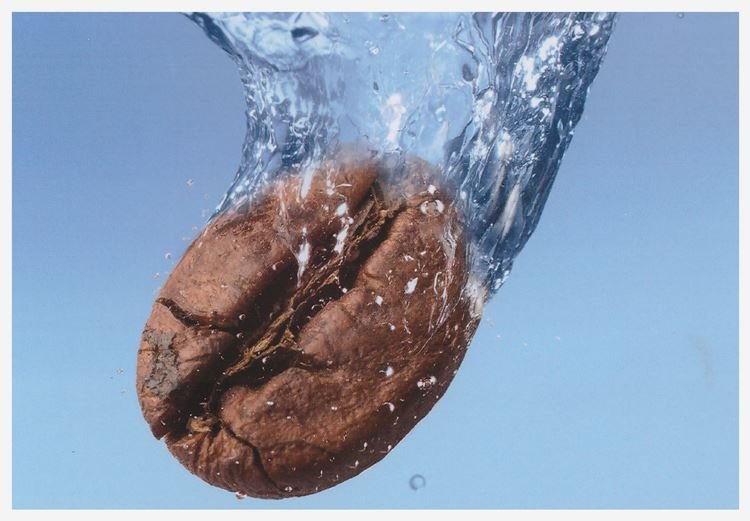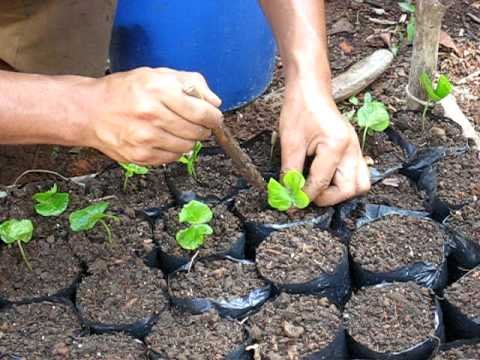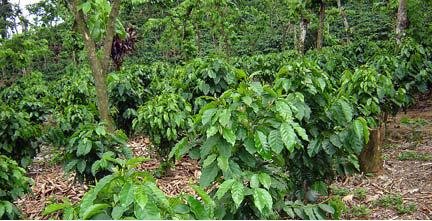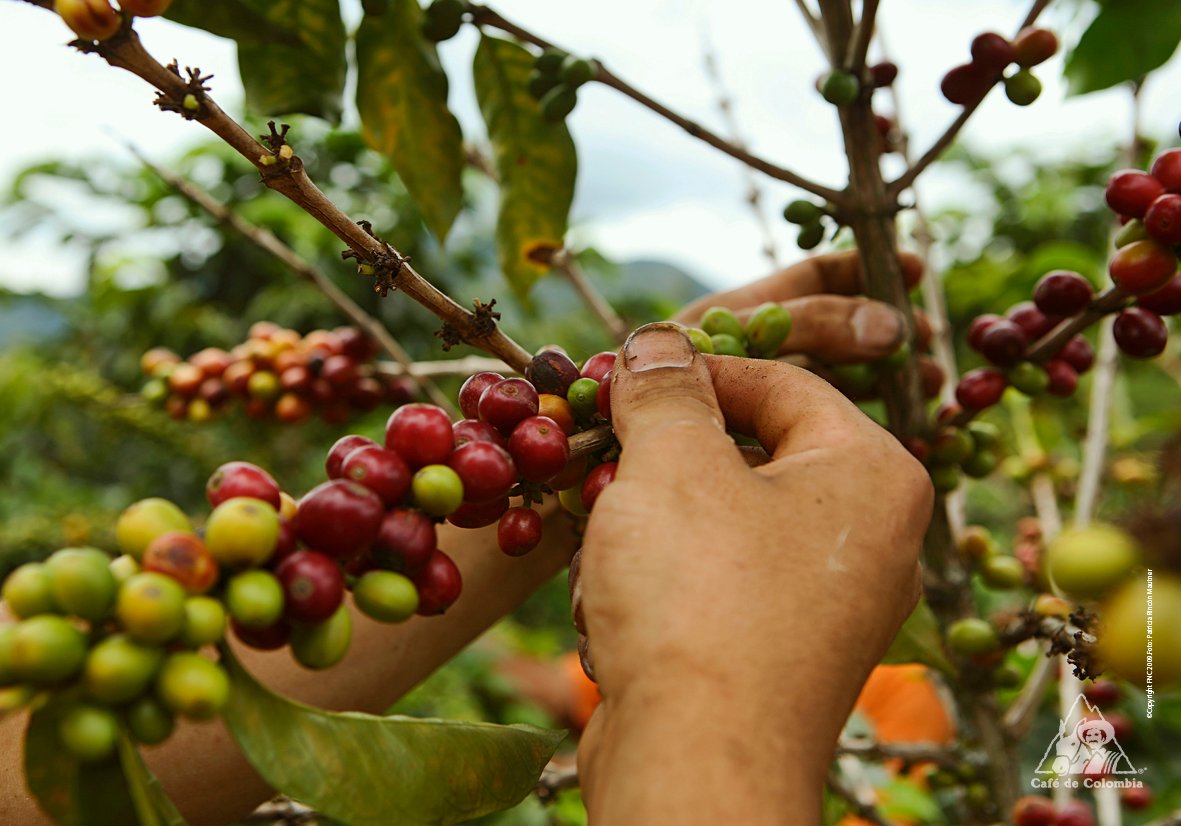

A warm greeting from me. If you have entered this article is because you want to taste a cup of coffee, in addition, who knows the coffee ?, with the aroma and flavor that has, of course, depends on the taste of the person. Personally, you enjoy pure coffee beans chewing and tasting. Without further ado, the first steps in the preparation of coffee from the production of raw material to liquid.
 Coffee is an area of great economic, social and conservation significance, so its defense and consolidation must be a priority task for coffee growers or producers. Under this approach, any element that represents a real threat factor must be taken into consideration.
Coffee is an area of great economic, social and conservation significance, so its defense and consolidation must be a priority task for coffee growers or producers. Under this approach, any element that represents a real threat factor must be taken into consideration.
On the other hand coffee is a product used worldwide, quoted on the stock exchange and likewise has medicinal properties; being for that reason a very important crop.
GERMINATED 
The seed must be treated before being sown. It is recommended a process called "pelletization" (process in which the seed is taken to be disinfected with chemical or agro-ecological products), then a disinfection of the soil where it is going to be planted must be carried out. using boiled water.
PLANTATION 
Shade regulation: it is vital to avoid pests and diseases. Weed control: this work should preferably be done manually, weed control is recommended before transplanting and harvesting. Pruning: when the plant is old it becomes unproductive and they get sick so the yields of the crop go down, for this it is necessary to carry out a selective pruning after each harvest, the way to carry out its pruning is cutting it diagonally leaving a fourth trunk of the same.
HARVEST 
The beginning of the coffee harvest depends on the date of maturation of the fruit, in the high areas where the temperature is low ripening is slower so its harvest would be later, in low areas ripening is earlier and uniform. For its process to be successful, its fruits must be ripe so it is necessary several times to collect the fruit in the plant.
PROCESS OF ELABORATION OF POWDER COFFEE 
There is only one method for its processing, from which you can skip some steps, but this time I will mention all the steps:
- The first step is the collection of "fruits or grains" of the plant, this starts from the producer or farmer makes a very careful selection in the coffee bean so there is a selection method; it's not scraping the plant, much less cutting it, it's about ripe grain by grain, taking it out and accumulating it for its process
- The washing of the pulp grain to remove the natural drool it possesses, abundant water for its rinsing, to then leave to soak the grain to achieve its mild fermentation, approximately 12 to 24 hours.
- Once the grain in the pulp is purified, a separation of the grain begins with the fresh shell called "pulp", which we call "pulping". This is done with a manual or automatic machine with a kind of mechanical part like a kitchen grater.
- It is optional after "pulping", for better results and a cleaner work a second wash which is known as "superior washing" which is to separate the waste that remains in the machine for the work done.
- The coffee is placed in grains to dry with the sun, in a preferably cement base which will help us retain heat and dry faster.
- Moving the grains exposed to the sun to obtain a homogeneous drying for this purpose, wooden rakes are used and the movement is smooth, trying to make the top grains go down and vice versa.
- Once dry, pass it to the thresher this step is called "Threshing coffee", which consists of separating the second shell called "Parchment" of the grain, one of the ways to know if the grain we have dried is ready to pass to the thresher, is to bite the grain, if you feel watery or weak to that grain it needs more drying, otherwise it is ready.
- “Toasting the grain ", this would be to put to heat the grains at a certain temperature in order to be separated from the liquid particles and to achieve the color, aroma and taste that we know.
- Finally the transformation of the grain to grind is done to obtain dust that we all commonly know in our homes for buying it already packaged.
- With the obtained powder, with a culinary culinary process the liquid is obtained.
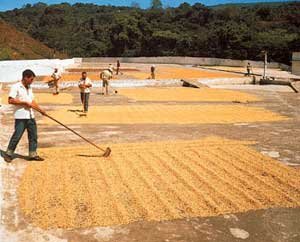
 Image link
Image link
 Image link
Image link
 Image link
Image link



